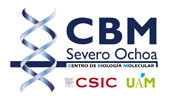Physiopathology of Glycine Transporters in Glycinergic neurotransmission: Hyperekplexia and Pain.
Physiological and pathological processes
Prof. Beatriz López-Corcuera. Catedrática. Departamento de Biología Molecular. UAM.
At present, the group studies the physiology and pathologies of glycinergic neurotransmission including hyperekplexia and pain. Hyperekplexia is a rare sensorimotor disorder provoked by defective glycinergic inhibition that may have severe consequences in neonates. The neuronal glycine transporter GlyT2, which is crucial for the recycling of synaptic neurotransmitter and supplies glycine for synaptic vesicle refilling, is nonfunctional in the presynaptic form of the disease. One of our aims is to identify and characterize new mutations in the human GlyT2 gene (SLC6A5) found in hyperekplexia patients. After the identification and assessment of the pathogenic mechanisms of several hyperekplexia-associated GlyT2 variants, we have now shown some of them are amenable to rescue from its trafficking defect by chemical chaperones. This may help developing more specific pharmacochaperones as candidate therapeutic tools for hyperekplexia with the help of 3D computational models we have developed. Some other hyperekplexia mutations have revealed interesting unknown aspects on transporter oligomerization we study with refined oligomer modeling. Moreover, we have found new components of GlyT2 interactoma, some of which are candidate hyperekplexia genes that remain to be identified, besides revealing a role in ion homeostasis for GlyT2 and its partners. An additional aspect of our research led us advance in the knowledge of the mechanisms of GlyT2 regulation. First, we have shown GlyT2 is regulated by the Hedgehog pathway in vitro and in vivo. GlyT2 control by this signaling cascade, clearly involved in development, moved us to investigate a possible role for GlyT2 in the development of glycinergic neurotransmission. We have also studied the role of transporters in the processing of nociceptive information by exploring mechanisms of GlyT2 regulation by M2 muscarinic acetylcholine receptors, the most clearly involved in pain processing in the spinal cord. Finally, we explored modulators of GlyT2 activity to obtain information applicable to analgesia. We analyzed the comparative docking of the two selective GlyT2 inhibitors with nanomolar affinity and defined their differential interactions with the transporter protein. Structural information about the interactions with GlyT2 may provide useful tools for new drug discovery applicable to analgesia.


